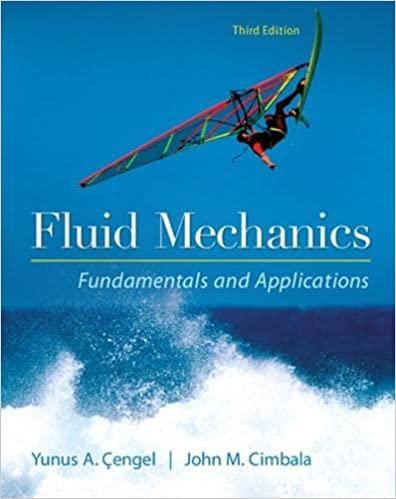We saw in Prob. 1031E that a slipper-pad bearing can support a large load. If the load
Question:
We saw in Prob. 10–31E that a slipper-pad bearing can support a large load. If the load were to increase, the gap height would decrease, thereby increasing the pressure in the gap. In this sense, the slipper-pad bearing is “self-adjusting” to varying loads. If the load increases by a factor of 2, calculate how much the gap height decreases. Specifically, calculate the new value of h0 and the percentage change. Assume that the slope of the upper plate and all other parameters and dimensions stay the same as those in Prob. 10–31E.
Data from Problem 31
A slipper-pad bearing with linearly decreasing gap height (Fig. P10–23) is being designed for an amusement park ride. Its dimensions are h0 = 1/1000 in
![]()
and L = 1.0 in (0.0254 m). The lower plate moves at speed V = 10.0 ft/s (3.048 m/s) relative to the upper plate. The oil is engine oil at 40°C. Both ends of the slipper-pad are exposed to atmospheric pressure, as in Prob. 10–30.
Calculate the convergence a, and verify that tan α ≅ α for this case.
Calculate the gage pressure halfway along the slipper-pad (at x = 0.5 in). Comment on the magnitude of the gage pressure.
Plot P* as a function of x*, where x* = x/L and P* 5 (P – Patm)h02/μVL.
Approximately how many pounds (lbf) of weight (load) can this slipper-pad bearing support if it is b = 6.0 in deep (into the page of Fig. P10–23)?
FIGURE P10–23

Step by Step Answer:

Fluid Mechanics Fundamentals And Applications
ISBN: 9780073380322
3rd Edition
Authors: Yunus Cengel, John Cimbala




